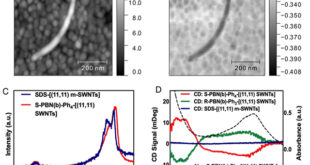Journal of Chemical Technology and Biotechnology,Volume 88, Issue 8, pages 1481–1487, 2013.
Eun Hea Jho, Jae-Woong Jung, Kyoungphile Nam
Department of Civil and Environmental Engineering, Seoul National University, Gwanak-gu, Seoul, Korea.
Abstract
BACKGROUND
Military areas such as firing ranges have serious contamination problems due to both heavy metals and nitroaromatic compounds (NACs). The feasibility of modified Fenton reactions for remediation of NACs is studied by investigating the fate of lead (Pb) and copper (Cu) during the modified Fenton reactions and its effect on the degradation of 2,4-dinitrotoluene (2,4-DNT) in soils at various hydrogen peroxide (H2O2) concentrations.
RESULTS
During the reactions, the Pb fate was not affected at ≤0.2 mol L−1 H2O2, but final aqueous phase Pb was higher in the samples than in the controls at >0.2 mol L−1 H2O2. These changes in the Pb fate resulted in interference with 2,4-DNT degradation at ≥0.2 mol L−1 H2O2. Similarly, aqueous phase Cu was higher in samples with >0.2 mol L−1 H2O2 than in the controls; however, unlike Pb, these changes did not have adverse effects on 2,4-DNT degradation.
CONCLUSION
The different effects of heavy metals such as Pb and Cu on 2,4-DNT degradation in soils during modified Fenton reactions need to be understood to optimize 2,4-DNT degradation performance. The results help to advance the Fenton reaction applications for the remediation of soils contaminated with Pb or Cu and 2,4-DNT mixtures. © 2012 Society of Chemical Industry
© 2012 Society of Chemical Industry
Additional Information
The TNT Solution (Target-Oriented & Trouble-shooting Solution) is a research team consisting of 114 researchers from Universities, industries, and research institutes in Korea led by Professor Kyoungphile Nam from Seoul National University. The TNT Solutioninitiated its 5-year research in April 2011 with 4 research divisions under one umbrella focusing on developing techniques for treatment of soil and groundwater contaminated with explosives and heavy metals in firing ranges. A total research fund of about 12.8 million USD is supported by the GAIA Project (Geo-Advanced Innovative Action Project) implemented by the Korean Ministry of Environment and managed by the KEITI (Korea Environmental Industry & Technology Institute).
The TNT Solution aims to develop an integrated management approach for contaminated firing ranges in Korea based on site-specific risk-based assessment of the sites. In more details, the first division of the team aims at preparing site-specific assessment and management guidelines for firing ranges. The divisionhas carried out detailed site investigations, established remediation and management strategies, predicted fate and transport of contaminants by modeling, and worked on developing ecological risk assessment-based management strategies. The second division has been developing in situ sustainable remedial techniques for soils contaminated with both explosives and heavy metals. The division firstly worked on catalysis-, rhizoremediation-, and wetland-based remedial techniques individually and then combined these into a series of remedial platform that is now being tested on site at a pilot-scale. The third division has been developing ex situ sequentialprocesses for contaminated soil remediation. The sequential processes involve an advanced separation process that separates heavy metals contaminated soil particles and either alkaline hydrolysis or subcritical water extraction for remediation of explosives remaining in the rest part of the contaminated soils.The fourth division deals with contaminated groundwater at sites. The division has been developing nano-sized zero valent iron and its injection method for remediation of explosives in groundwaterand porous biobeads for remediation of groundwatercontaminated with both explosives and heavy metals. Currently, field demonstrations of these developed techniques are being conducted. Overall, the research results by the TNT Solution will contribute largely on solving contamination problems around firing ranges in Korea.
 Advances in Engineering Advances in Engineering features breaking research judged by Advances in Engineering advisory team to be of key importance in the Engineering field. Papers are selected from over 10,000 published each week from most peer reviewed journals.
Advances in Engineering Advances in Engineering features breaking research judged by Advances in Engineering advisory team to be of key importance in the Engineering field. Papers are selected from over 10,000 published each week from most peer reviewed journals.


